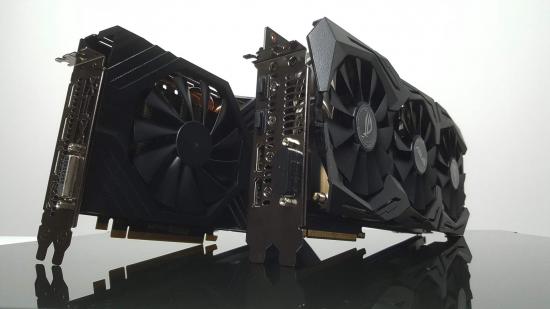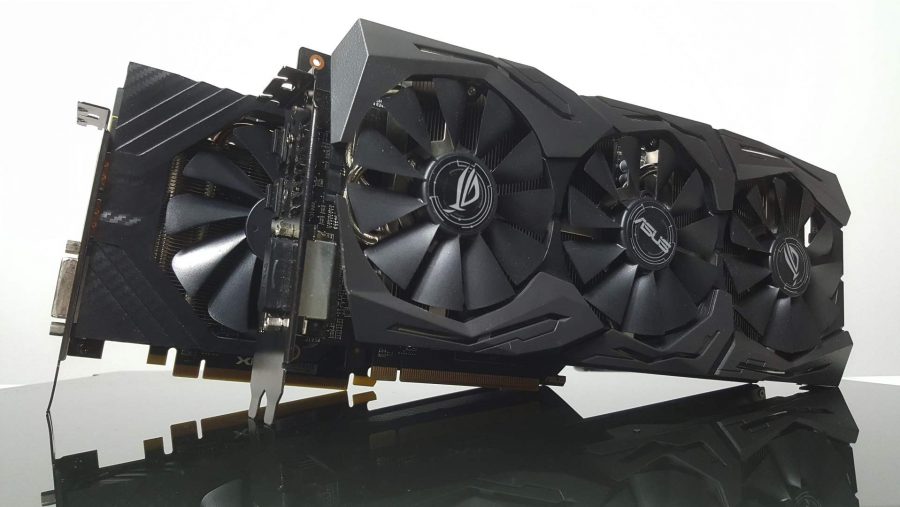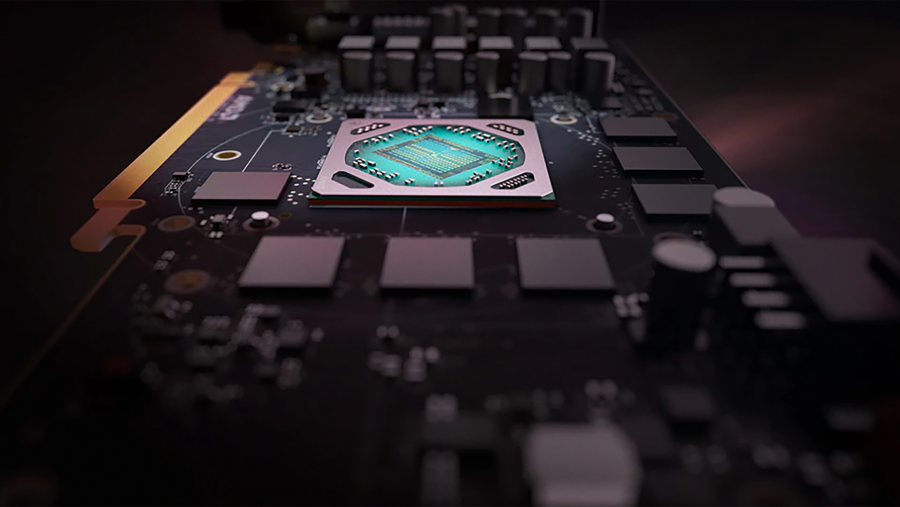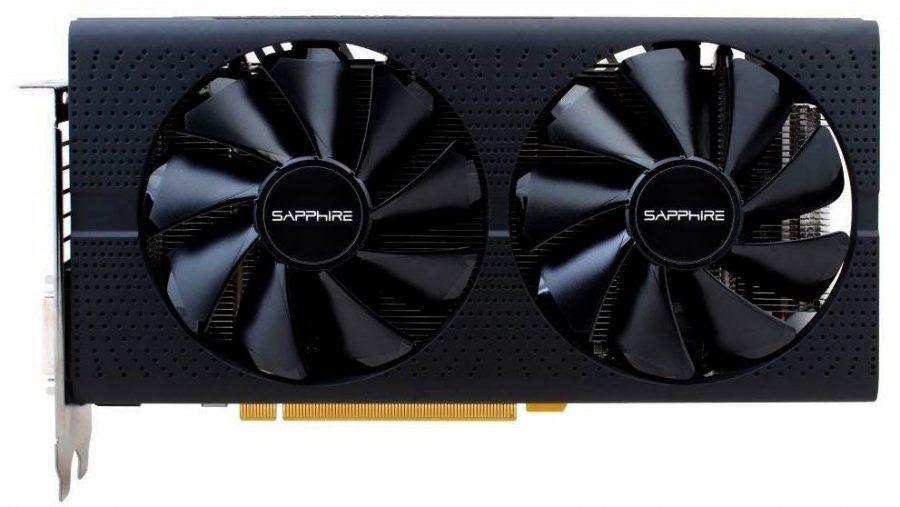Our Verdict
The AMD RX 580 8GB card is the best-value gaming GPU around right now. It's a little quicker overall compared with the GTX 1060 and only the tiniest bit behind the new RX 590 - but significantly cheaper than them both. The GTX 1660 Ti does far outstrip its gaming performance, but is still a lot more money.
The AMD RX 580 is now the smart elder statesman of the current Radeon lineup, but when it first arrived the mildly updated Polaris GPU was actually a bit of a disappointment. Not only were we hoping the 500-series cards would herald a new world of Vega-based graphics cards (which ended up being their own unique brand of disappointing), it was barely any different from the RX 480 that had landed a year earlier.
But a year and a half, and one crypto mining boom later, the RX 580 has managed to deliver on the ‘fine wine’ promise that AMD attaches to all of its silicon. It’s now the graphics card that we would recommend as the best GPU to drop into your gaming rig… unless you have an infinite money tree and can spend $1,200 on an RTX 2080 Ti anyways.
It’s an impressively powerful, well-priced graphics card, with a comparatively huge pool of video memory and an aptitude for dealing with modern graphics APIs. And at just $190 (£197) it has very little competition in the market, with Nvidia’s GTX 1060 only giving it pause in a few DX11 titles and still being more expensive on the whole. Even the new GTX 1660 Ti struggles against its genuine value proposition.
t does have a little more competition in the mainstream market right now, with AMD launching its ‘new’ RX 590 graphics card. That’s just a moderate 12nm die-shrink of the Polaris GPU at the heart of the old RX 580, but it’s also a timely reminder that AMD’s mainstream graphics cards are your best bet for great-value gaming performance right now.
Even with the GTX 1660 Ti being unveiled its GTX 1070-level gaming performance keeps it another pricing tier above the RX 580. The straight GTX 1660 might have something to offer, however, with its slightly chopped TU116 GPU and $220 price tag.
AMD RX 580 specs
Polaris Enhanced. That’s what AMD called the updated 500-series of graphics cards, but they were never expecting to encourage anyone that spent their cash on a last-gen Polaris card to upgrade. Despite calling the GPUs at the heart of both the new RX 580 and RX 570 Polaris 20 it is still really the same 14nm Polaris 10 chip they used, to great effect, in the RX 480 and RX 470 cards.
The ‘enhanced’ bit comes from the fact that 12 months on from the initial Polaris release both the 14nm FinFET technology and the 4th Gen GCN architecture used in the latest AMD Radeon cards had a full year to mature. That means the production process and yields improved and the resulting GPUs were more robust.
| AMD RX 590 | AMD RX 580 | Nvidia GTX 1060 | |
| Manufacturing process | 12nm | 14nm | 16nm |
| Die size | 232mm2 | 232mm2 | 200mm2 |
| Stream processors | 2,304 | 2,304 | 1,280 |
| Texture units | 144 | 144 | 80 |
| ROPs | 32 | 32 | 48 |
| Memory size | 8GB GDDR5 | 8GB GDDR5 | 6GB GDDR5 |
| Memory bus | 256-bit | 256-bit | 192-bit |
| TDP | 225W | 185W | 120W |
| Price | $279 | £250 | $210 | £195 | $250 | £220 |
That’s the main reason AMD have been able to release RX 580 cards with a higher base clock speed than the reference RX 480 cards saw at launch. The base/boost clocks of the original RX 480 were 1,120MHz and 1,266MHz respectively, while the reference spec of the RX 580’s Polaris 20 chip is set at 1,257MHz and 1,340MHz. With the general tightening up of the GPU’s manufacturing process AMD can ship out cards using pretty much the previous chip’s peak performance as a starting point to work up from.
Though if you were hoping for the same 40 compute unit, 2,560 core, Polaris GPU Microsoft shipped with the AMD-powered Xbox One X you’d be disappointed. Outside of the reference clock speed bump the RX 580 is the same GPU beast as the RX 480. The core configuration is identical – the 14nm Polaris 20 in the new card is still sporting 36 compute units (CUs) with 2,304 stream processors spread out across them. Alongside that are the same 144 texture units and 32 ROPs.
The memory system is the same too, with 8GB of GDDR5 delivering a full 256GB/s of memory bandwidth. And, like the 400 series cards, there are both 4GB and 8GB versions of the RX 580, as well as the RX 570.
All that seems to have really changed then, clockspeed hike aside, is the new RX 580 cards have a higher TDP to allow for the enhanced clockspeeds the new designs are shipping with. Those clockspeeds above are just the suggested reference design specs, but the fact AMD never created any reference samples for the new cards was indicative of their refresh/rebadge status, and also that most RX 580 cards would be expensive factory overclocked ones even if the prices weren’t being artificially boosted by the gluttonous mining community.
Our XFX sample runs at 1,366MHz, while the Asus STRIX card hits a heady 1,411MHz out of the box. The original STRIX edition of the RX 480, on the other hand, runs at a default 1,330MHz. That itself was a pretty hefty boost in factory-overclock terms, but the new variant from Asus is almost 100MHz ahead of that.
AMD RX 580 benchmarks
PCGamesN Test Rig: Intel i7 8700K, Asus ROG Strix Z370-F Gaming, 16GB Crucial Ballistix DDR4, Corsair HX1200i,
Philips BDM3275
AMD RX 580 performance
The RX 580 is only a little behind the newer RX 590 in terms of overall gaming performance, and generally there is only ever a few frames per second on average between them. That’s something of a surprise given the significantly higher clock speeds offered by the updated, 12nm cards.
That’s not really the key battleground for the RX 580, however. How it performs against the Nvidia GTX 1060 is where the real fight is, and that’s far more interesting. On the whole the AMD Graphics Core Next architecture has the edge in overall gaming performance. There are a few instances where the Nvidia GPU holds sway, but that’s only ever in last-gen DirectX 11 games. In the more modern APIs, and DirectX 12 in particular, the AMD silicon has the GeForce card beat.
When you take a step up in gaming resolution the improved memory subsystem of the AMD card comes to the fore. With another 2GB of GDDR5 memory, and a wider 256-bit memory bus, the RX 580 in 8GB trim is better able to deal with the rigours of high-res textures and the extra overall pixel count.
That’s not to say the GTX 1060 isn’t still a great performer at this end of the market, it most certainly is, but when the performance is so close pricing becomes an even bigger consideration. And when the RX 580 just has the edge on gaming frame rates overall, and the edge in pricing, it doesn’t look good for the GeForce card.
Where the Nvidia GPU does have a significant edge, however, is in the classic GeForce efficiency. Back in the Maxwell days Nvidia made a play for efficiency when it was unable to action a silicon die shrink, and that move is still paying off. The GTX 1060, outside of its reference cooler design, often runs cooler than the RX 580, but definitely draws far less power to game at almost the same level.
AMD RX 580 verdict
The RX 580 is hands-down the best-value graphics card on the market today. With the pricing problems of the mining boom times a distant memory, the RX 580 8GB cards can be picked up for as little as $190 (£196), and that’s a comparative bargain. Given the fact the closest Nvidia competitor card is often well over $250 it’s actually quite tough to recommend the more expensive GeForce GPU despite its better overall gaming performance.
That’s still a huge amount of money for most of us to spend on a single component for our gaming PCs. Sure, we’d all love to be able to spend RTX 2080 Ti money without pause, but in the real world even ducking under that $200 mark can be daunting. And at the $200 level AMD has the market sewn up, though maybe the GTX 1660 will have something to say about that…




